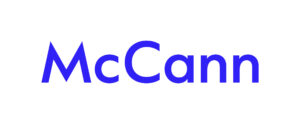 by Rebecca Jones, Head of PR at McCann Manchester
by Rebecca Jones, Head of PR at McCann Manchester
PR measurement has always landed with clients alongside a heavy dollop of scepticism. Sure, there’s the number of pieces of coverage, the reach, the sentiment but what do these really deliver? What do they mean for a brand or business?
When a PR campaign lands and becomes the subject of the water cooler moment, there’s no denying its power and impact, but effectively measuring the impact of a successful day to day press office is harder to do. As an industry, we continue to struggle to connect PR results with genuine business outcomes, but the ability of PR to drive fame, educate and manage reputation remains. So how can we prove PR’s value without a clear value being defined?
I’m going to say it … I miss the days of AVE.
For the uninitiated, AVE or Advertising Value Equivalency, was the practice of determining the success of an earned media placement by comparing it to the cost of an ad of a similar size, in the same publication and multiplying it – by three – to address the additional value of the coverage being ‘earned’ rather than ‘paid for’, as the information being shared was deemed more trustworthy and therefore intrinsically more valuable.
Ad cost x 3. A simple formula, happy days.
So why the move away from this often-complimentary measure? There are a number of reasons, none of which we can unfortunately ignore.
AVE fails to take into account the content quality or sentiment.
Would your client pay for a feature that effectively criticises their product or service? Probably not. Journalists with integrity write what they think, that’s what makes positive coverage so valuable. Comparing a piece of coverage with a negative tone to a sales focused print ad is just false data, but AVE evaluation doesn’t require you to remove these articles from your calculations. It works on the old adage, “there’s no such thing as bad publicity.”
AVE is a totally arbitrary and often inaccurate figure.
AVE bases the value of a hard-earned piece of coverage on a number, and it has no impact on or control over the cost of ad space. As ad revenues continue to decline and publications are forced to drop their rates, either the calculation is based on a rarely paid rate card or on a figure so low that it no longer justifies the success of the coverage achieved. Either way the maths is, unfortunately, flawed.
There is no AVE calculation for social media success.
It’s been a long time since PR success was measured in coverage inches alone and in an ever-increasing integrated world, the value of PR goes far beyond the piece itself. So, you’ve achieved the ultimate aim. Your campaign has gone viral. There’s no handy rate card or media pack to help you work out the value of all that social noise that stems from your original PR idea.
So what’s the answer?
It’s clear that, as the way we practice PR evolves, AVE is no longer fit for purpose. The Barcelona Principles, The Integrated Evaluation Framework (IEF) and the PESO model have all suggested new methods for evaluating PR success. But no new measurement system has taken off to replace AVE in a universal way. So, what should the industry be doing instead to measure PR success in a standardised and comparative way that can help prove the value of work to clients?
If we look at all the reasons why AVE no longer works then we can start to consider what we need to do to modernise the approach to measurement.
Measure the audience response: Whether that’s sales, comments, uptake or understanding over a set period of time. It’s important to ensure that the message we wanted to communicate to our audience has a) reached them and b) achieved the desired impact. There are of course a lot of variables that can lead to audience response, but if you know what you’re trying to achieve and the period you’re trying to achieve it in you can certainly explore whether PR success has contributed. That leads us to…
Agree the impact you’re looking to achieve before you start the campaign: Set relevant and measurable goals and objectives, agree what you want the desired audience response to be and the way you’re going to track it. If you don’t do this, you’ll never be able to attribute success, no matter how great your campaign went.
Take a qualitative and a quantitative approach: Sure, ridiculous reach figures and a bursting coverage book look good in your client’s end of year review, but understanding whether the titles were the right ones, whether the coverage made the right points and looking at other alternative metrics beyond the numbers, will help you justify your approach and develop future campaigns worth doing.
Understand your competitor set and track your share of voice: Looking at your campaign results in a vacuum will never help you demonstrate to your client that the work you’re doing for them is shifting the dial. Stacking your media results against a competitor’s is a useful tactic for evaluating the overall effectiveness of your efforts.
If we’re honest, there will always be two types of metrics when it comes to measuring and evaluating PR success. There are the numbers that help to sell PR as a channel and the agency or service delivering it – these are the numbers that look good on a slide.
And then there’s the metrics – and I don’t believe they’re always numbers – that actually help us develop campaigns with impact, campaigns that allow us to stand back and be proud of the work we’ve done, that allow us to reproduce success and continue to improve as PR practitioners.
So, is it possible to accurately measure earned media? Unfortunately, no. I don’t think it is.
But I believe delivering a meaningful PR campaign is about more than what’s ultimately measurable, it’s about buzz and noise and opinion and belief. And, whatever the results on the slide in the wrap up report, that should always be the aim.
McCann PR are starting a project to reconsider how to measure PR effectiveness, more on this to come. If you’d like to talk to us about how to drive effective results for your business, through PR, please don’t hesitate to get in touch.
Rebecca Jones is Head of PR at McCann Manchester. She has 22 years of experience in communications; specialising in PR, social media and influencer relations, having worked on local and global campaigns for a wide range of brands from head and shoulders and Pantene to Bodyform, Fiat 500 and Bupa.
